
GPD MicroPC 2 review: N250 & N300 Benchmarked – A Pocket Powerhouse Reborn
You would be excused for not knowing about the GPD MicroPC. First appearing in 2019, it may not have gained the widespread fame of its gaming-oriented siblings. However, I can confirm that the MicroPC remains highly regarded for its application in professional industries. The new GPD MicroPC 2 introduces several excellent enhancements, along with one change that might leave fans of the original feeling let down. Continue with our GPD MicroPC 2 review for a complete breakdown.
GPD MicroPC 2 Review Video
GPD MicroPC 2 at a Glance
We begin our GPD MicroPC 2 review with a physical tour of the device. The GPD MicroPC 2 has dimensions of approximately 6.7 x 4.3 x 0.92 inches (17.12 x 11.08 x 2.35 cm) and tips the scales at around 500g (1.10 lbs). Its width has increased slightly from the first iteration to accommodate a larger screen.
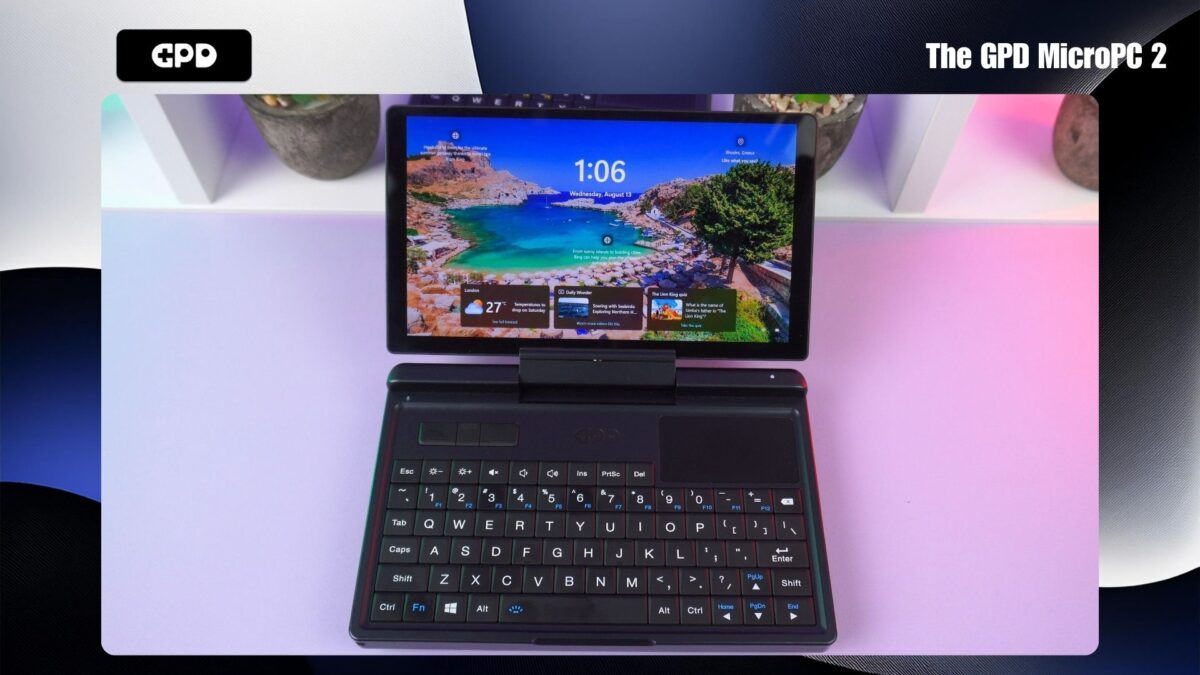
The display size has been expanded from the original’s 6 inches to a 7-inch touchscreen on the MicroPC 2. It boasts a 1920×1080 resolution with a 60Hz refresh rate. A major new feature is the display’s ability to rotate and fold flat, transforming the device into a tablet that is very pleasant to hold. These three updates are all splendid improvements that elevate the MicroPC 2 to a much more versatile and modern standard.
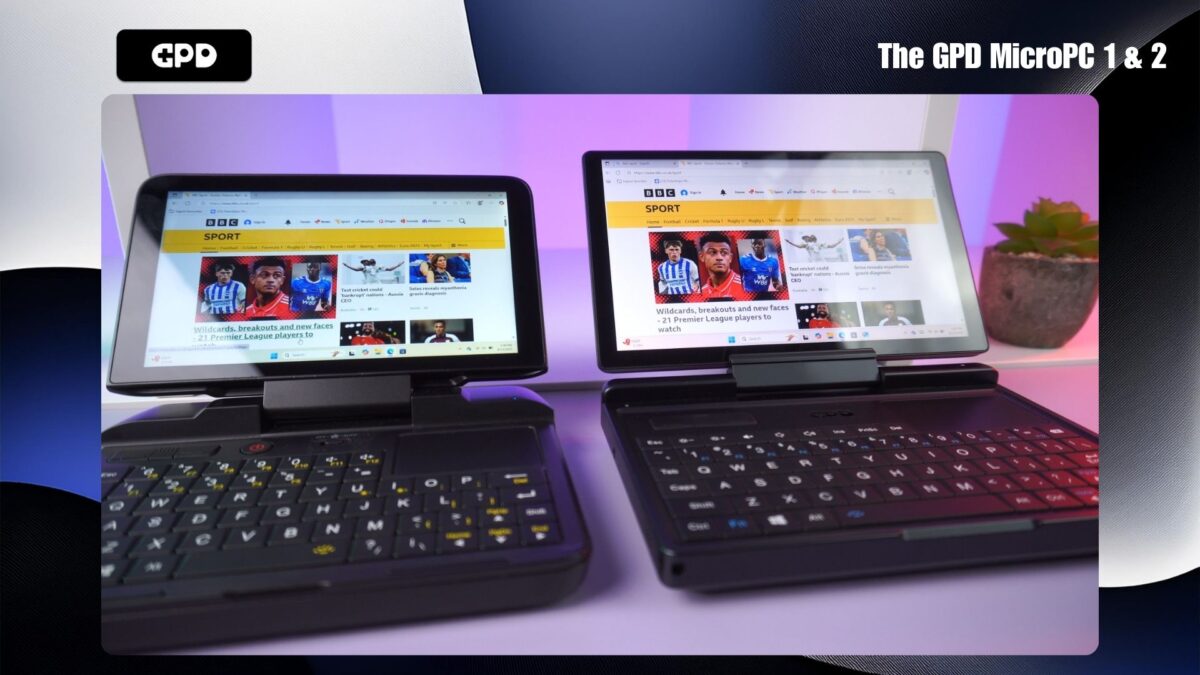

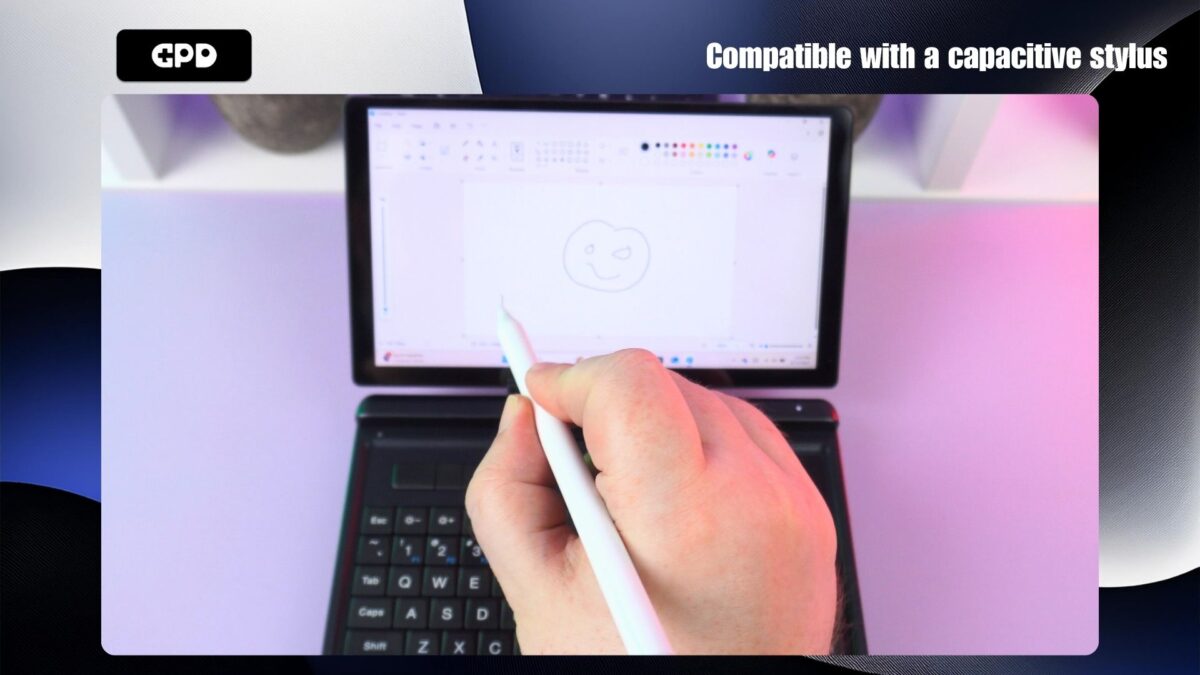
The screen is compatible with a capacitive stylus for input, but it does not support active styluses.
On the device’s lower section, the configuration is reminiscent of the GPD Pocket 4. You’ll find left, middle, and right mouse buttons situated in the upper-left area, with a touchpad positioned on the upper-right. The backlit keys follow a layout similar to the Pocket 4’s but are slightly more compact.

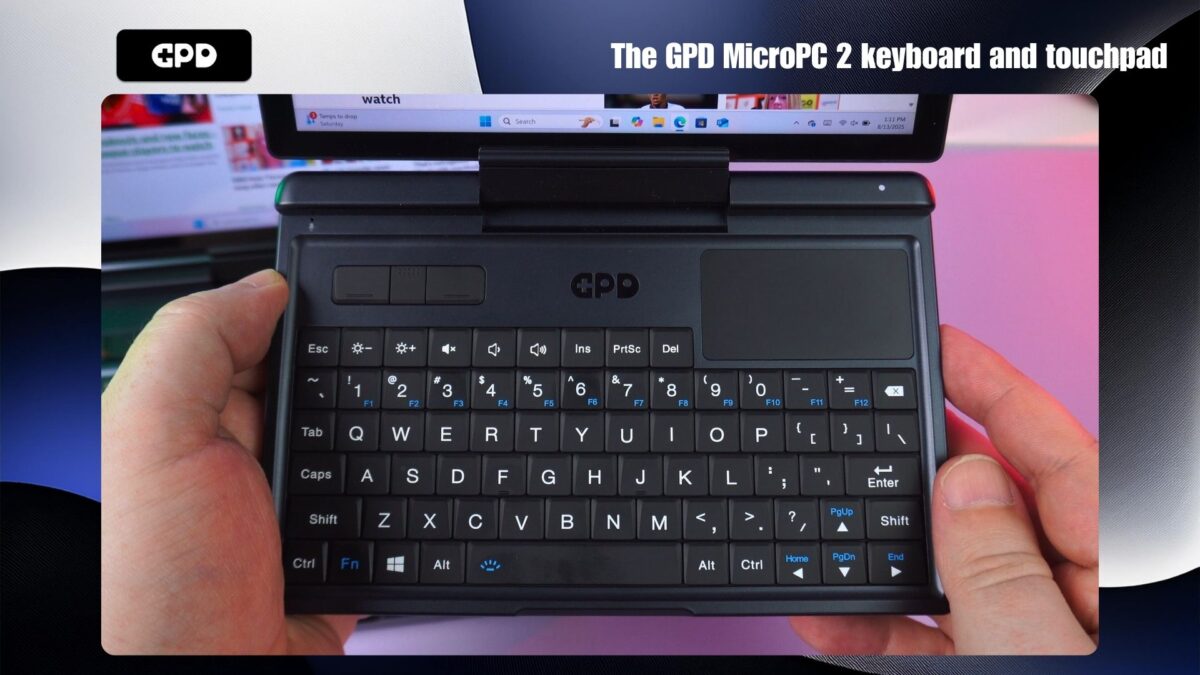
These keys are a bit too small for conventional touch-typing. I found it most effective for typing with my thumbs or one or two fingers, achieving decent speed and accuracy. While you could write longer documents in a pinch, I would recommend connecting a larger keyboard for such tasks.
The left flank houses a 3.5mm audio jack. The right side features a USB 3.2 Gen2 Type-A port and the power button, which has an integrated fingerprint reader for quick and secure logins.
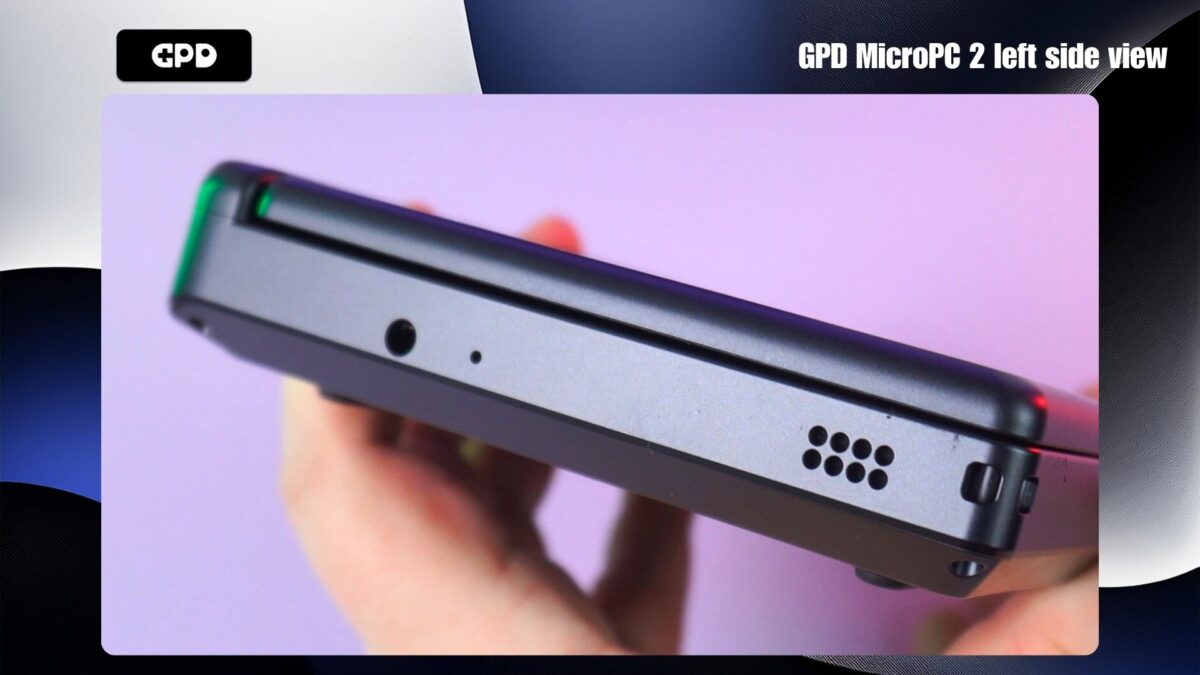

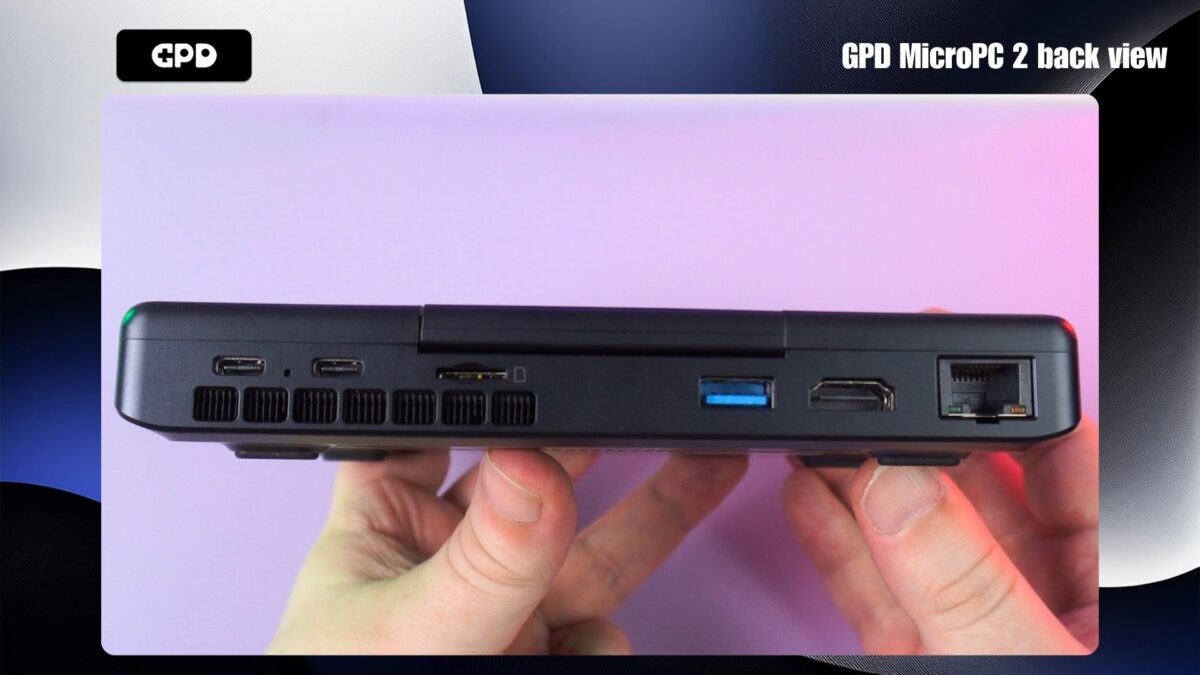
The rear of the device is equipped with two USB 3.2 Gen2 Type-C ports that handle both charging and video output. Additionally, there is a microSD card slot, a second USB 3.2 Type-A port, an HDMI 2.1 port capable of outputting up to 4K at 60Hz, and a 2.5Gbps ethernet port.
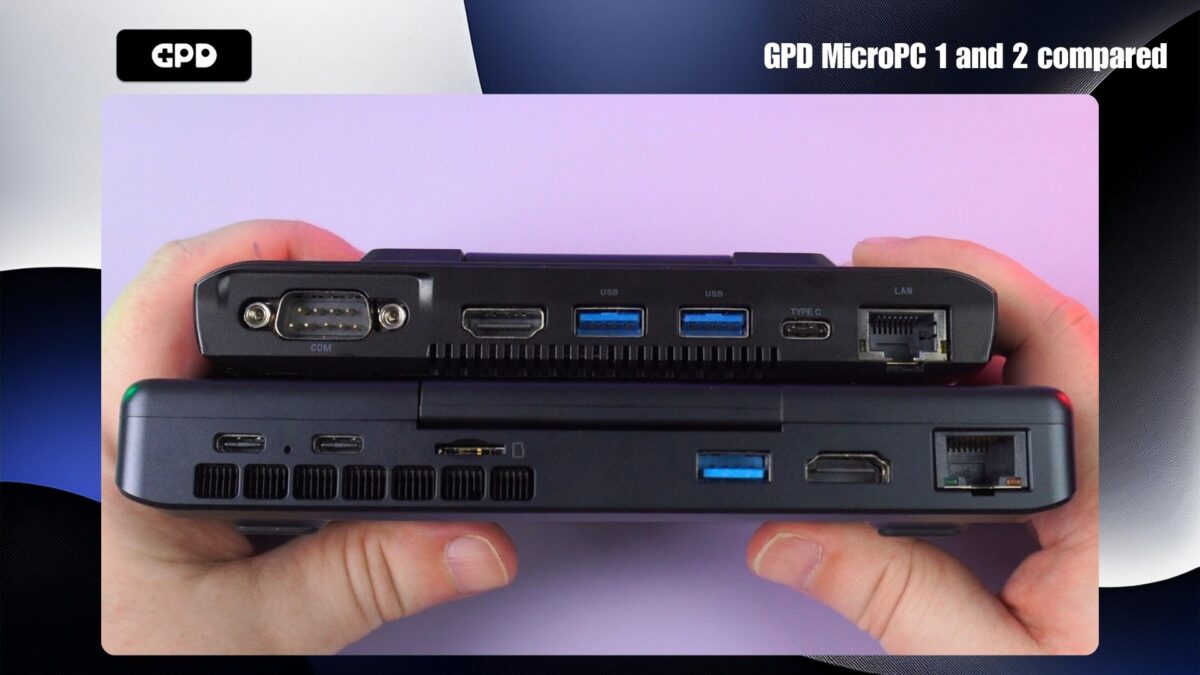
Regrettably, a built-in RS232 port is absent from this model. We are unsure of the reason for this omission, but users have the option of choosing the GPD Pocket 4 with its RS232 module or using this device with a USB adapter.
GPD MicroPC 2 Technical Specifications
Next up in our GPD MicroPC 2 review, we’ll examine the two available models, along with our findings from battery life, fan noise, and thermal testing.
| DISPLAY | 7″ LTPS 1080P (1920×1080), 60Hz, 16:9, 314 PPI, 500 nits |
| CPU | Intel Processor N250, 4 Cores / 4 Threads, 3.8 GHz, 6W – 15W Intel Processor N300 8 Cores / 8 Threads, 3.8 GHz, 7W |
| GPU | Integrated Intel UHD Graphics, 1.25GHz, 32 Execution Units |
| RAM | 16GB LPDDR5 |
| STORAGE | 512GB/1TB/2TB/4TB M.2 2280 SSD |
| COMMUNICATIONS | 1x RJ45 Ethernet Port (2.5Gbps) Wi-Fi 6 (up to 2402 Mbps) Bluetooth 5.2 (supports up to 7 active devices) |
| I/O | 2x USB Type-C 3.2 Gen2 (Full-Function) 2x USB-A 3.2 Gen2 1x HDMI 2.1 (TMDS Protocol, supports 4K@60Hz) 2x DisplayPort 1.4 (via USB-C, supports 4K@60Hz) |
| BATTERY | 27.5Wh Supports Battery Bypass |
| DIMENSIONS | 6.73 x 4.33 x 0.91 inches (17.1 x 11.0 x 2.3 cm) |
| WEIGHT | 500 grams (1.10 lbs) |
Both models are sustained by a 27.5Wh rechargeable battery. In our tests running Cinebench with the screen at maximum brightness and default TDP, the N250 model lasted for 1 hour and 42 minutes, while the N300 model ran for 1 hour and 47 minutes. Naturally, typical day-to-day use will yield longer battery life, estimated between 4 to 6 hours.
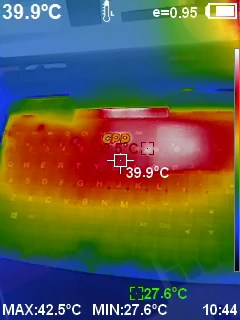
During our fan noise and temperature evaluations under full load, we recorded a maximum noise level of 55dB and a peak temperature of 53°C. These results are both impressively quiet and cool!
GPD MicroPC 2 N250 vs N300 Performance Benchmarks
For our benchmarking, we are setting the GPD MicroPC 2 N250 and N300 models against the original MicroPC by GPD, which was equipped with an Intel Celeron N4120 processor.
PassMark
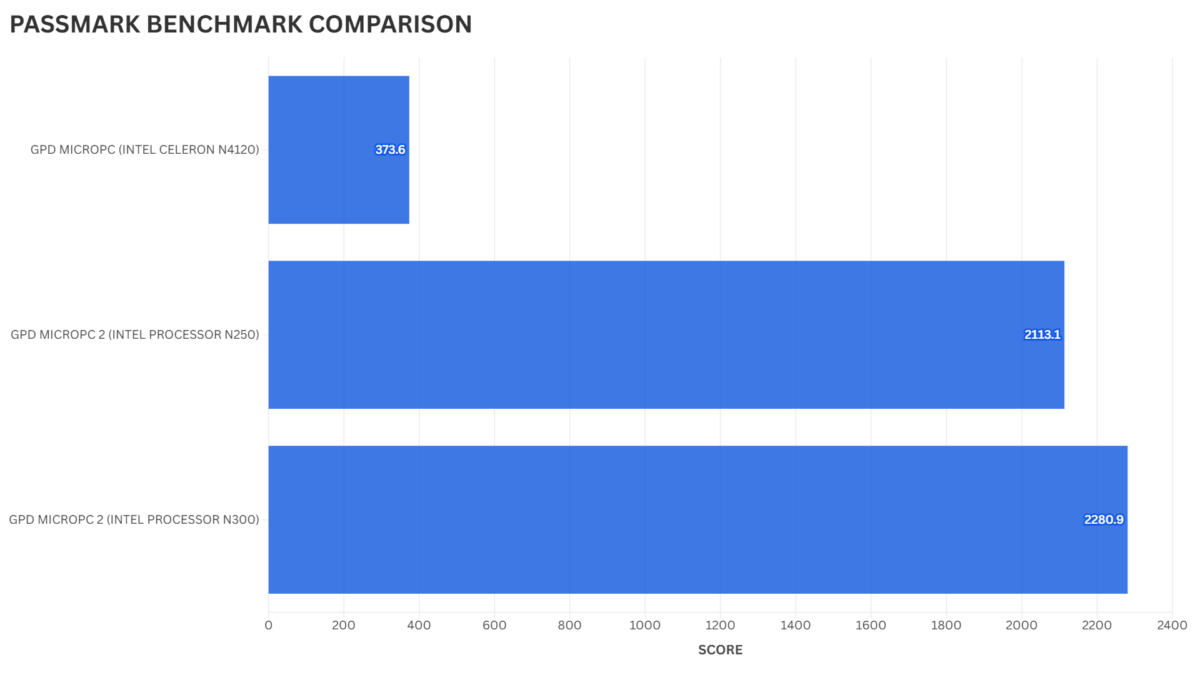
PassMark conducts a comprehensive benchmark evaluating the CPU, GPU, RAM, and storage through various tests. We observed an immediate and massive leap in scores compared to the original device, which is wonderful to see. There’s a performance difference between the GPD MicroPC 2 N250 and N300, though it’s not a vast margin.
PCMark
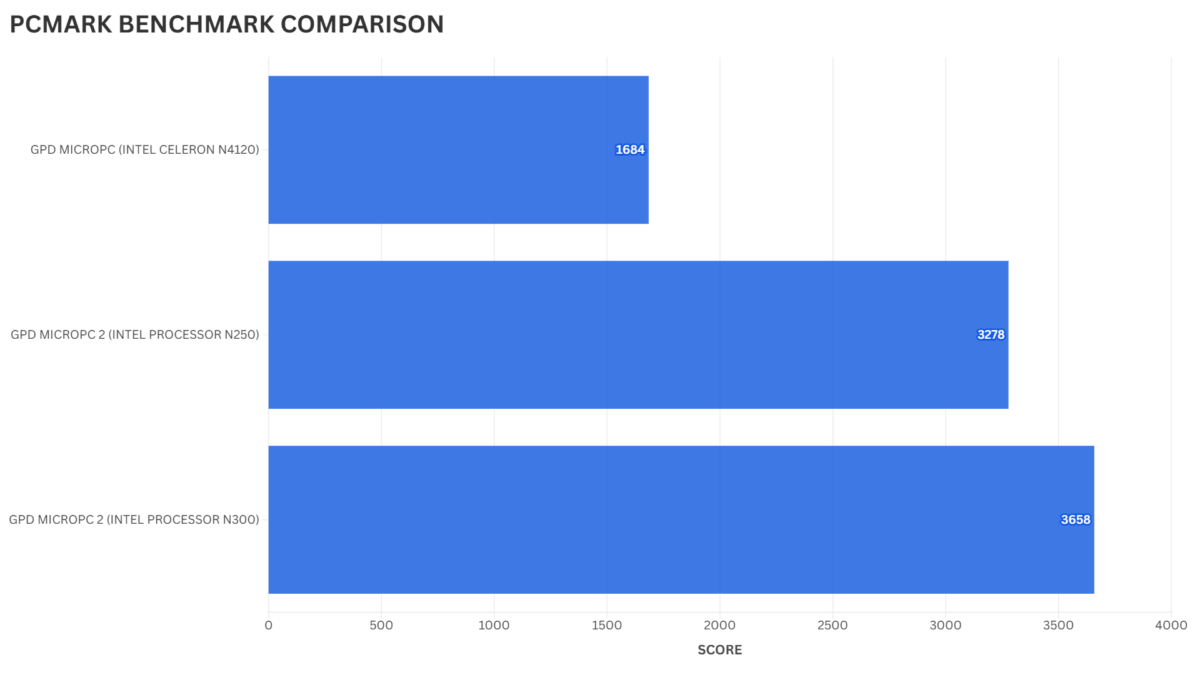
PCMark runs a battery of tests simulating everyday activities, from web Browse and video calls to managing large documents and light image/video editing. Once again, we see a huge boost in performance over the original model, and a more discernible performance gap between the N250 and N300 variants.
Cinebench R23
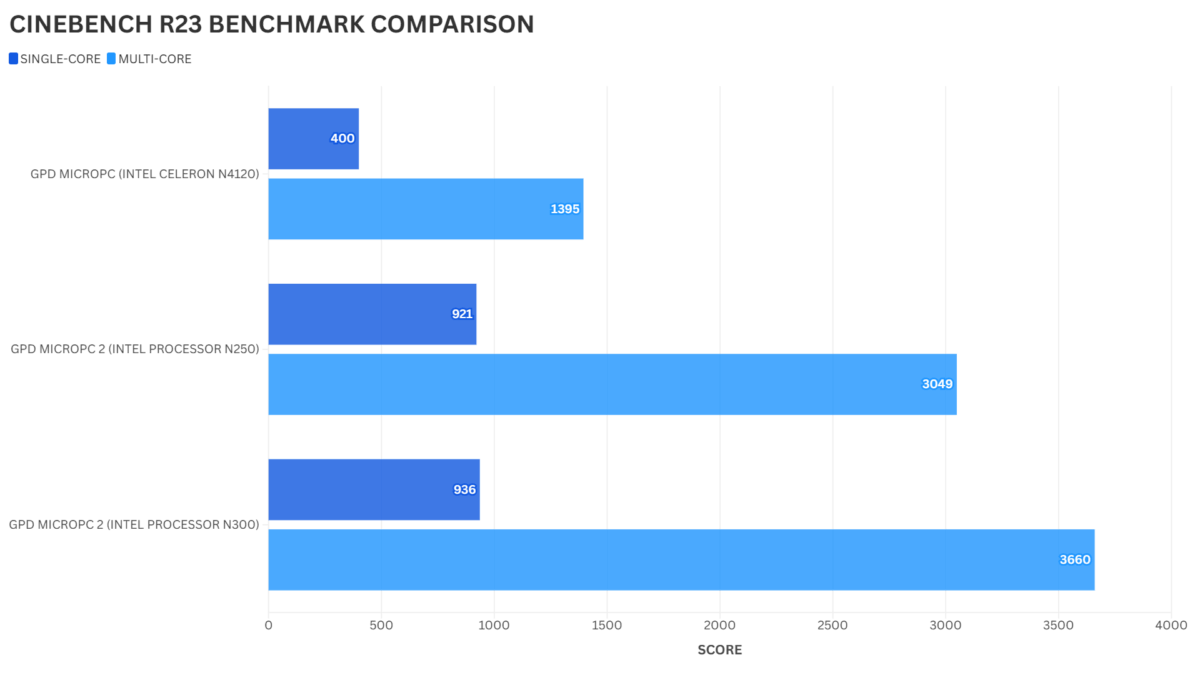
Taking a brief look at Cinebench R23, we find very striking improvements over the original device. The difference in single-core performance between the two new models is minor, but there’s a more substantial gap in multi-core performance.
Cinebench 2024
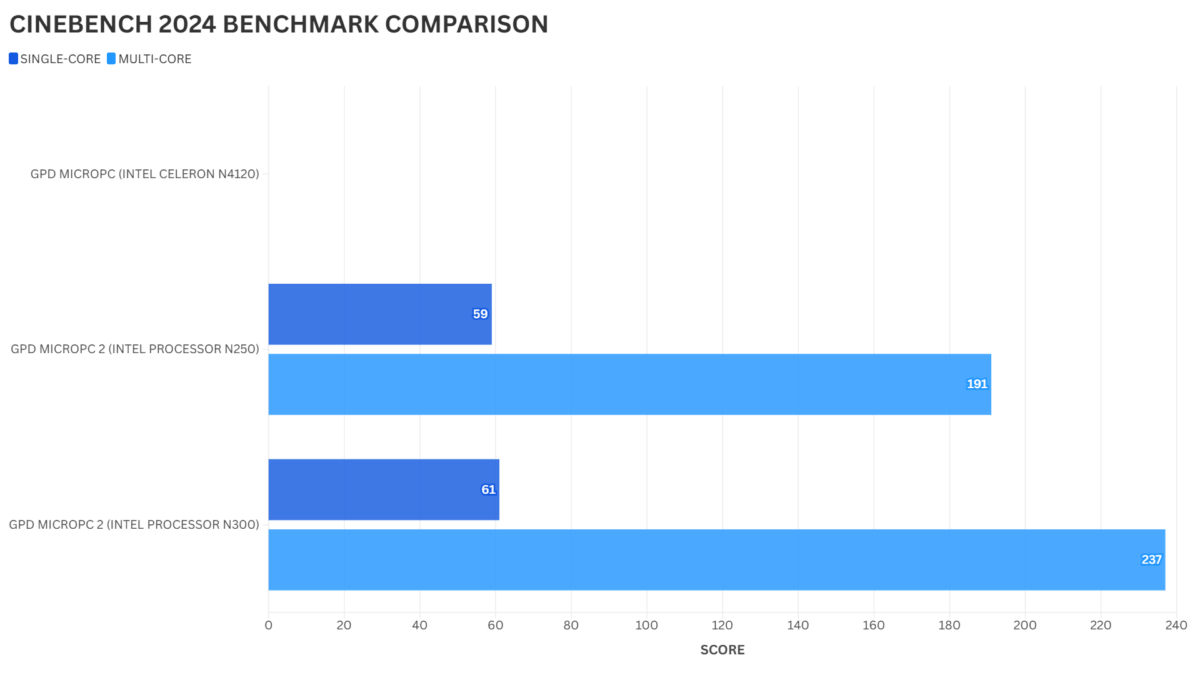
The CPU in the original model lacks the necessary instruction set support for the Cinebench 2024 benchmark. Between the two GPD MicroPC 2 models, we see comparable scores in single-core tests and a slightly wider gap in multi-core performance.
Geekbench 6
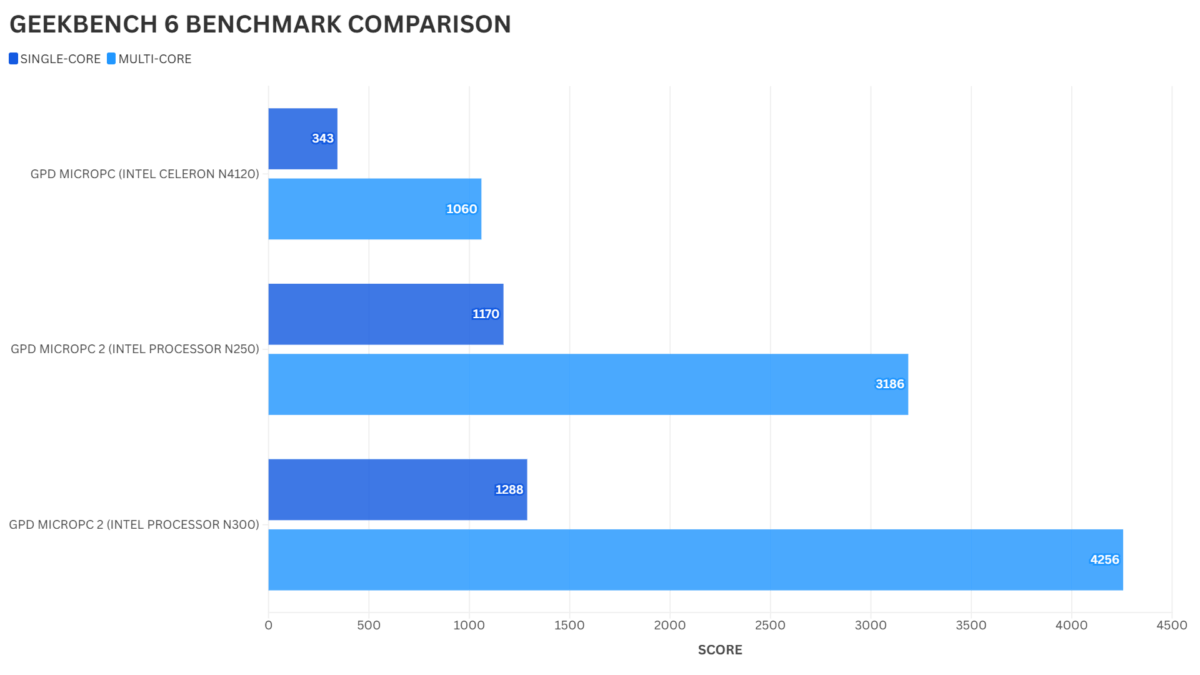
With Geekbench 6, the performance difference compared to the original model is extremely noticeable. When comparing the GPD MicroPC 2 N250 and N300, we see a significant disparity in their multi-core scores.
Benchmark Analysis
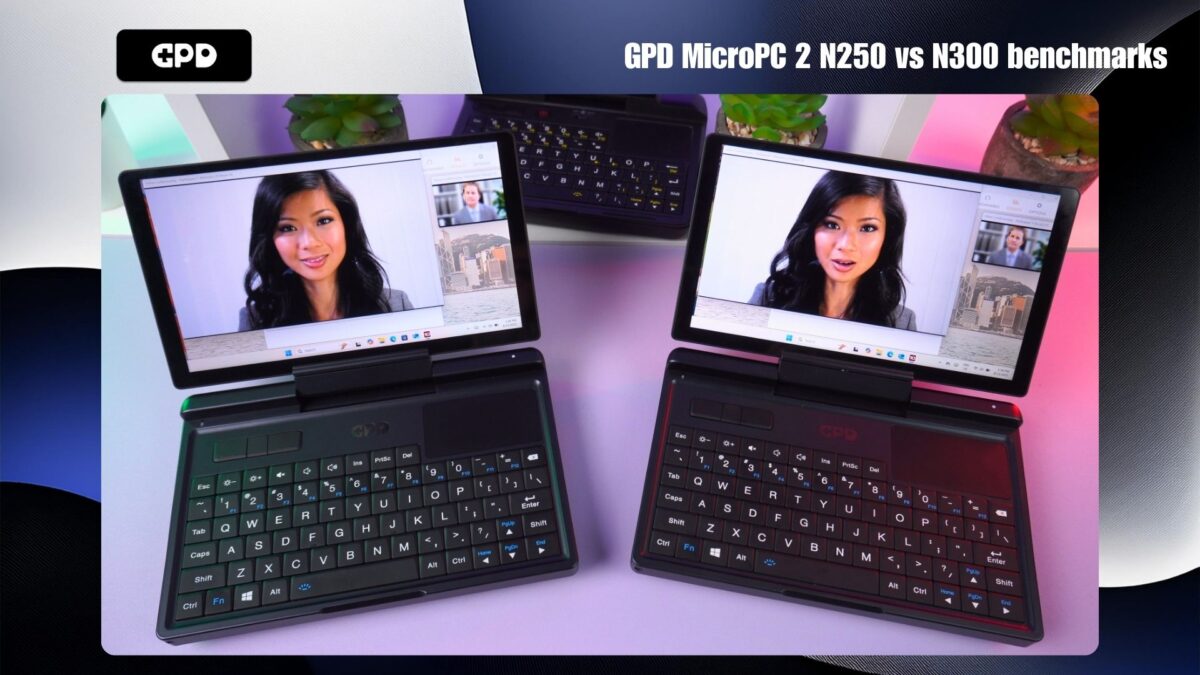
Here is a concise summary of the benchmark outcomes for the GPD MicroPC 2 review. The performance difference between the GPD MicroPC 2 and the original model is like night and day. It represents a colossal improvement that is palpable even when just navigating the Windows desktop. We also observe some clear distinctions between the two GPD MicroPC 2 models, ranging from a few percentage points in PassMark to upwards of 28% in Geekbench 6.
Concluding Thoughts
It’s time to summarize our impressions in this GPD MicroPC 2 review. The GPD MicroPC 2 has been a long time coming since the first model’s debut in 2019. The wait has certainly been justified, delivering a slightly larger touchscreen, a 2-in-1 laptop-and-tablet design, and, of course, a vastly more powerful processor.
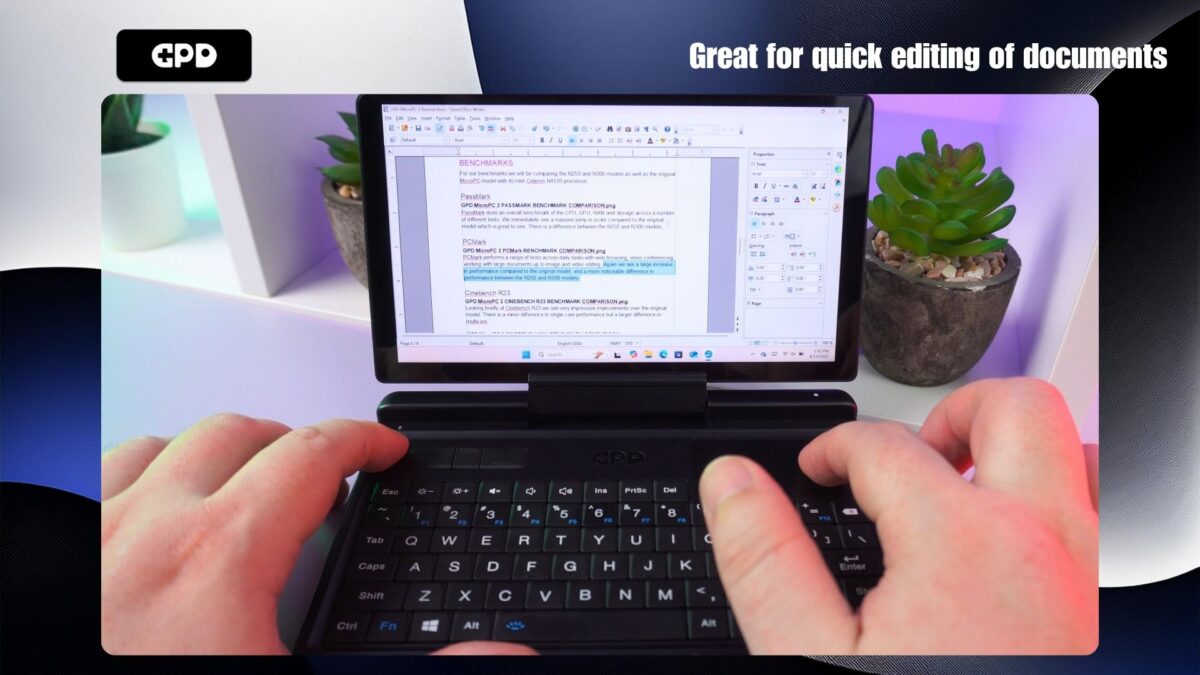
The tablet functionality is particularly welcome, offering a new way to engage with the device. It can be utilized for tasks like filling out forms or even as an e-book reader. While not a full-sized keyboard, the built-in one is quite functional for thumb or single-finger typing, making it perfect for brief note-taking or updating reports while out of the office.
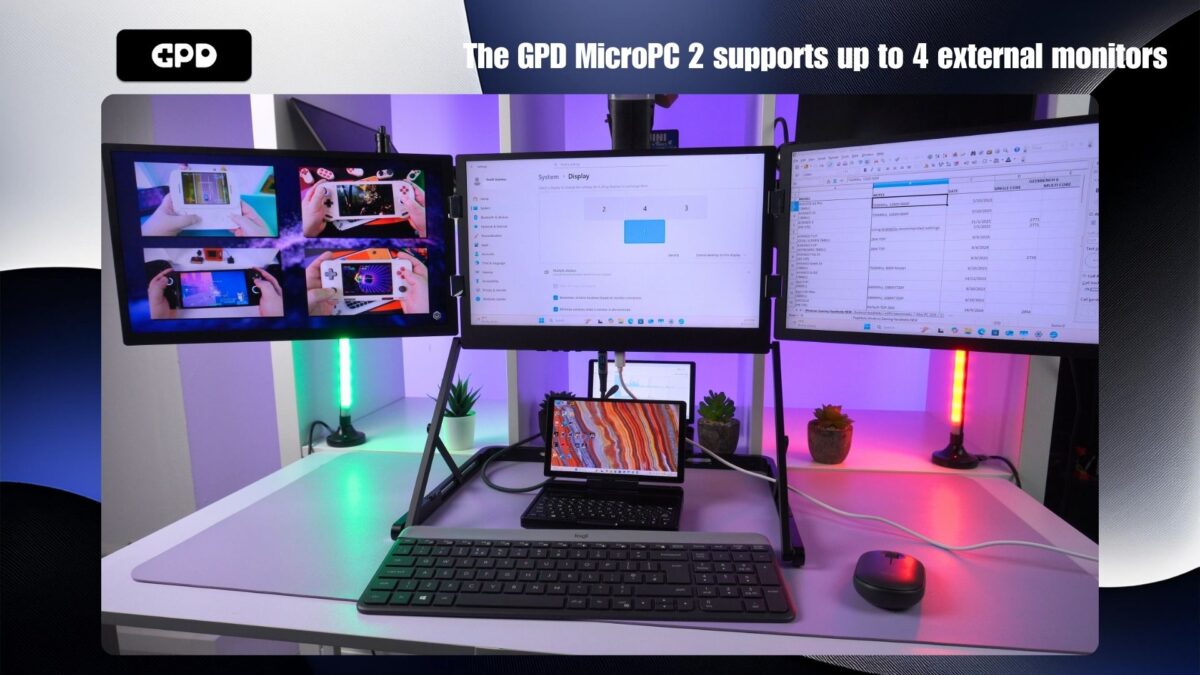
Using the HDMI and USB-C ports, you can drive up to four external displays, attach a full-sized keyboard and mouse, and convert it into a highly respectable desktop-like workstation. All of this capability comes from a device that is barely larger than your hand!
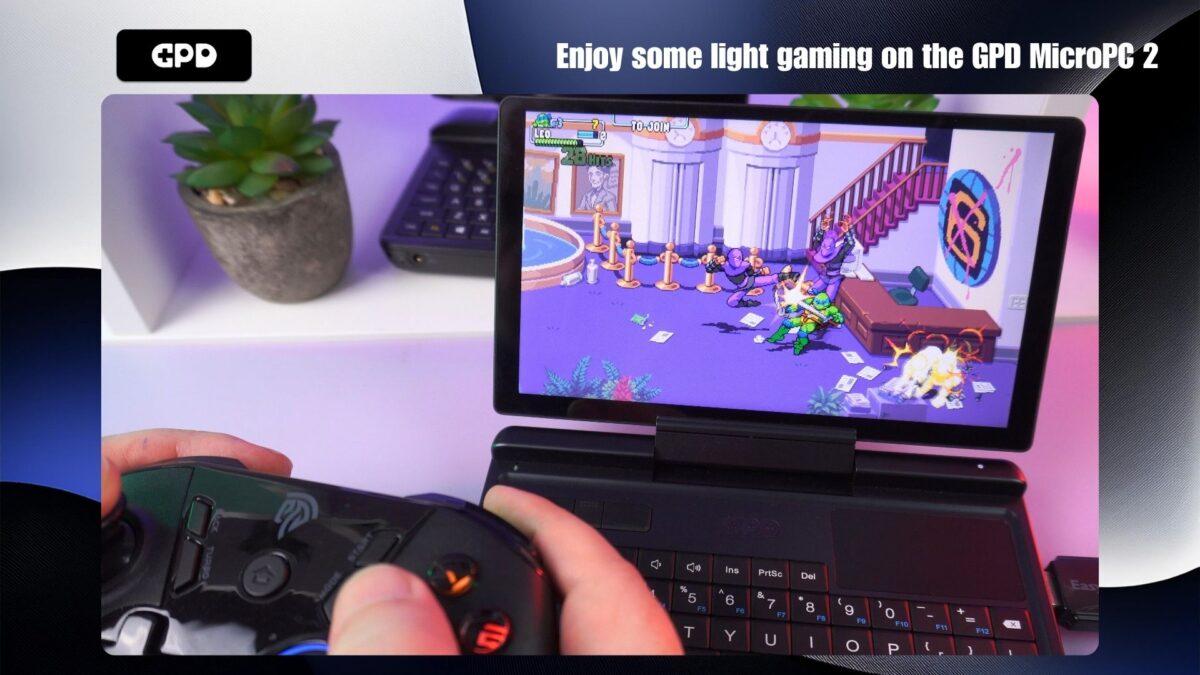

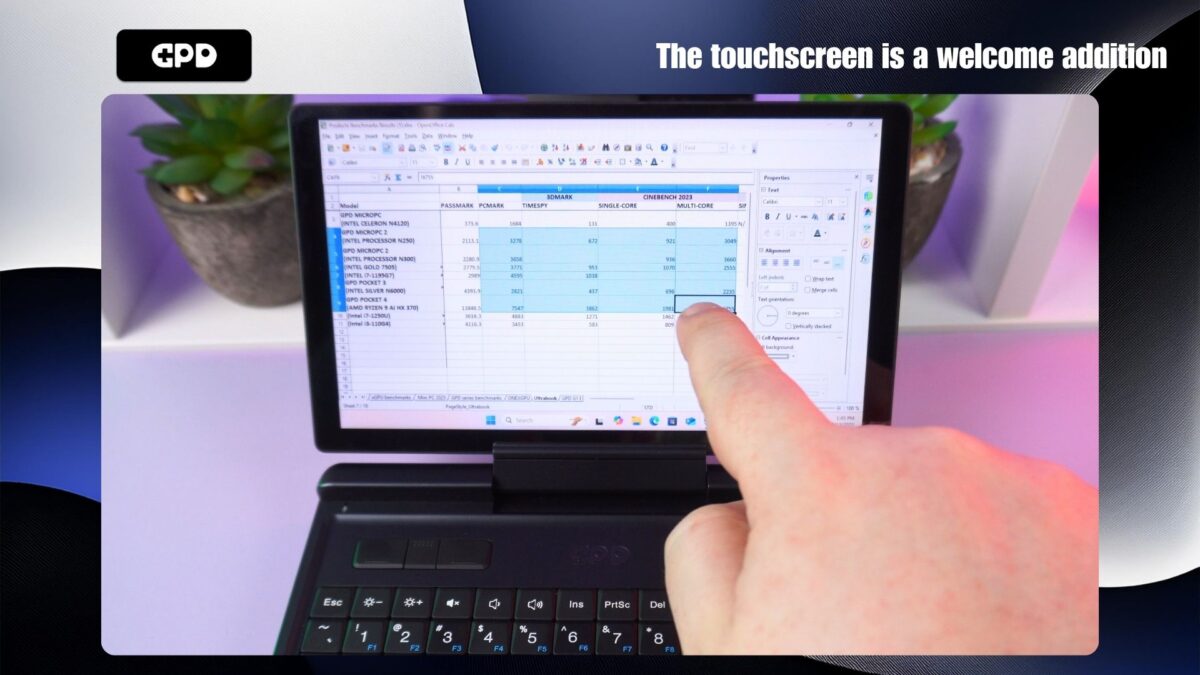
My sole point of criticism is the omission of the RS232 port, a feature that truly distinguished the original MicroPC back in 2019. We know from many customers how invaluable this was, eliminating the need to fuss with extra dongles and drivers. It is unfortunate that it was excluded from this new model, but the excellent GPD Pocket 4 remains an option if this is a non-negotiable requirement for you.
In conclusion, the GPD MicroPC 2 is a superb refresh of the classic model, offering a respectable level of performance for your daily tasks, both inside and outside the office. It is exceptionally portable, fitting easily into a jacket pocket or small bag, and can be scaled up to a desktop-like experience in seconds.
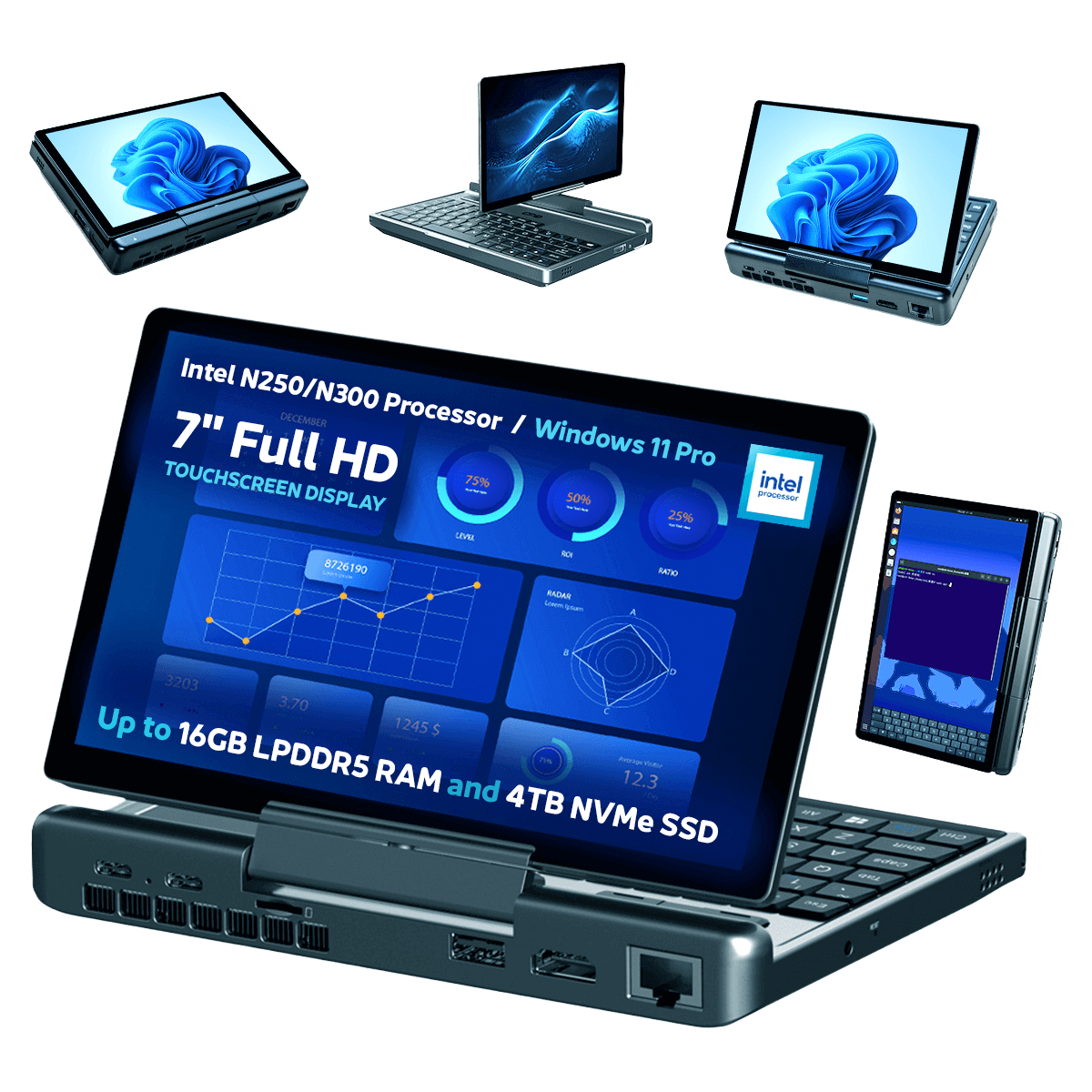
GPD MicroPC 2 UMPC
We hope you have found our GPD MicroPC 2 review useful. If you have any questions please feel free to ask in the comments below and we will be happy to answer.
